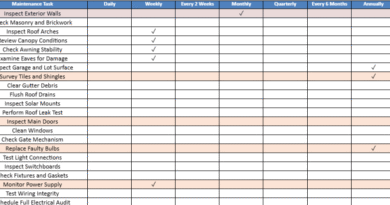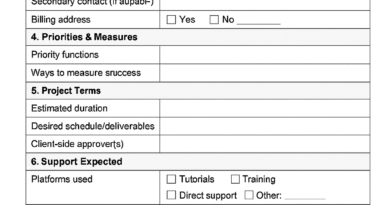Understanding Customer Satisfaction Score (CSAT): A Guide to Measuring and Enhancing Customer Satisfaction
Recommandés
Customer satisfaction is a critical factor for the success of any business. Happy customers tend to be loyal customers, and they are more likely to recommend your products or services to others. To gauge and track customer satisfaction, many businesses rely on a metric known as the Customer Satisfaction Score (CSAT). In this article, we will delve into what CSAT is, how it’s calculated, and why it’s an essential key performance indicator for businesses.
What is the Customer Satisfaction Score (CSAT)?
The Customer Satisfaction Score, commonly referred to as CSAT, is a metric used to measure how satisfied customers are with a particular product, service, or overall experience. It provides a snapshot of customer sentiment and helps businesses understand whether their customers are content or dissatisfied.
CSAT is typically calculated by asking customers to rate their satisfaction on a scale, which can be numerical or descriptive. The scale often ranges from very dissatisfied to very satisfied, with customers selecting a point on the scale that best represents their level of satisfaction.
How to Calculate CSAT
Here’s a step-by-step guide to calculating the CSAT:
1. Survey Customers
The first step in calculating CSAT is to survey your customers. This involves asking a specific question related to their satisfaction. The question can be tailored to fit the context of your business, such as “How satisfied are you with your recent purchase?” or “How satisfied are you with the service you received today?”
2. Rating Scale
Provide customers with a rating scale to respond to the survey question. The rating scale can take various forms, but the most common are numerical scales, such as 1 to 5 or 1 to 10, where a higher number indicates higher satisfaction. Alternatively, you can use descriptive scales, such as “very dissatisfied,” “dissatisfied,” “neutral,” “satisfied,” and “very satisfied.”
3. Collect Responses
Gather responses from your customers over a specified period. This can be done through various channels, including online surveys, email questionnaires, in-person interviews, or phone calls.
4. Calculate the Score
To calculate the CSAT score, you’ll focus on the responses that fall into the top two categories of your rating scale. For example, if you’re using a 5-point scale, you’ll consider the responses from customers who selected “satisfied” and “very satisfied.” The formula for CSAT is as follows:
[ \text{CSAT} = \left( \frac{\text{Number of Satisfied Customers (top two scores)}}{\text{Total Number of Respondents}} \right) \times 100 ]
This formula yields a percentage that represents the overall customer satisfaction score.
5. Analyze and Act
Once you have calculated the CSAT score, it’s crucial to analyze the results. Look for trends, patterns, and areas where customer satisfaction may be lacking. Use this information to identify areas for improvement and take action to enhance the customer experience.
Read : Elevating Customer Satisfaction through Surveys and Microsoft Word
The Importance of CSAT
CSAT is a valuable key performance indicator for several reasons:
1. Immediate Feedback
CSAT provides real-time feedback from customers, allowing businesses to quickly identify issues and address them promptly.
2. Benchmarking
CSAT scores can be compared over time to assess whether customer satisfaction is improving or declining. It also enables benchmarking against industry standards and competitors.
3. Customer Loyalty
Satisfied customers are more likely to become loyal customers who continue to do business with you and recommend your brand to others.
4. Product and Service Improvement
CSAT feedback helps businesses pinpoint areas that require improvement, leading to better products, services, and customer experiences.

Using CSAT in Context
While CSAT is a valuable metric, it’s essential to use it in conjunction with other customer satisfaction metrics for a comprehensive view of the customer experience. Two additional metrics commonly used alongside CSAT are:
1. Net Promoter Score (NPS)
NPS measures customer loyalty by asking customers how likely they are to recommend your company to others. It provides insights into customer advocacy and brand perception.
2. Customer Effort Score (CES)
CES assesses the ease with which customers can achieve their goals when interacting with your business. It focuses on minimizing customer effort, which is crucial for a positive customer experience.
In conclusion, the Customer Satisfaction Score (CSAT) is a valuable tool for businesses to gauge and improve customer satisfaction. By following the steps to calculate CSAT and using it in conjunction with other metrics, companies can better understand their customers’ needs and enhance the overall customer experience. Remember, satisfied customers are more likely to stick around and contribute to the success of your business.
Unlocking Success with Customer Satisfaction Scores (CSAT): Real-World Use Cases and Strategies
Here are some use cases for the Customer Satisfaction Score (CSAT) in various industries and contexts:
E-commerce Website:
- Use Case: An e-commerce company wants to measure customer satisfaction with their online shopping experience.
- How CSAT is Used: After a purchase, customers receive an email survey asking them to rate their satisfaction with the website’s usability, checkout process, product quality, and overall shopping experience. The company uses CSAT scores to identify areas for improvement, such as optimizing the website’s user interface or enhancing customer support.
Restaurant Chain:
- Use Case: A restaurant chain aims to monitor and improve customer satisfaction at its locations.
- How CSAT is Used: Customers receive a short survey on their receipts, asking them to rate their dining experience. The CSAT scores help each restaurant location identify areas that need attention, such as food quality, wait times, or staff friendliness. The chain uses aggregated data to assess overall customer satisfaction and implement changes accordingly.
Software as a Service (SaaS) Company:
- Use Case: A SaaS company wants to gauge customer satisfaction with its software and support services.
- How CSAT is Used: After interacting with customer support or using the software, users receive CSAT surveys to rate their experience. The company uses CSAT scores to evaluate the effectiveness of its support team and identify software features that require improvement. This feedback informs product development and customer service strategies.
Healthcare Provider:
- Use Case: A healthcare provider, such as a hospital or clinic, wants to assess patient satisfaction.
- How CSAT is Used: Patients receive post-visit surveys, asking them to rate their experience, including the quality of medical care, waiting times, staff interactions, and facility cleanliness. The provider uses CSAT scores to make operational improvements, enhance patient care, and maintain high levels of patient satisfaction.
Online Education Platform:
- Use Case: An online education platform wants to measure student satisfaction.
- How CSAT is Used: After completing courses or modules, students receive CSAT surveys to rate the content, instructor effectiveness, platform usability, and overall learning experience. The platform uses CSAT scores to identify areas for curriculum enhancement, instructor training, and technical improvements to keep students engaged and satisfied.
Retail Chain:
- Use Case: A retail chain with multiple stores wants to assess customer satisfaction at individual store locations.
- How CSAT is Used: Customers are invited to participate in CSAT surveys via QR codes or receipts after shopping at a specific store. The chain uses CSAT scores to evaluate the performance of each store and identify regional trends or differences. Store managers can then make targeted improvements, such as optimizing inventory or staff training.
Telecommunications Provider:
- Use Case: A telecommunications company seeks to understand and improve customer satisfaction with its services.
- How CSAT is Used: Customers are periodically surveyed about their experiences with services like internet connectivity, mobile plans, and customer support. CSAT scores help the company identify areas where network quality or customer service can be enhanced. This data informs decisions on network infrastructure upgrades and customer support training.
These use cases demonstrate the versatility of CSAT in gathering customer feedback and improving satisfaction in various industries. Whether it’s enhancing online shopping experiences, optimizing healthcare services, or refining software products, CSAT is a valuable tool for businesses to measure and respond to customer sentiment effectively.









